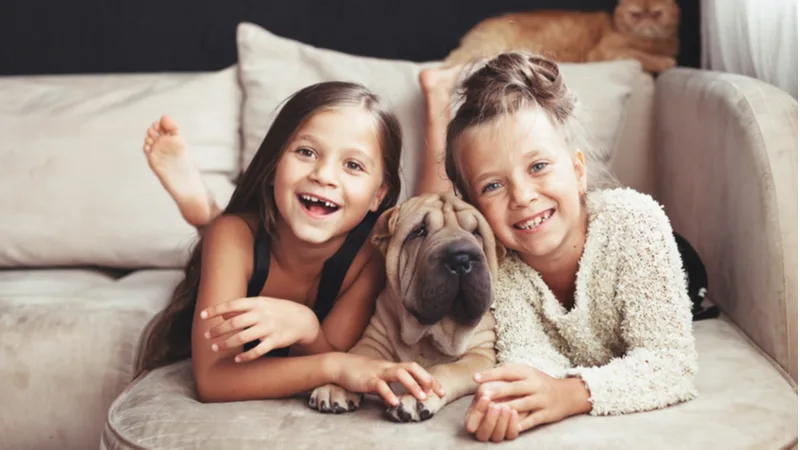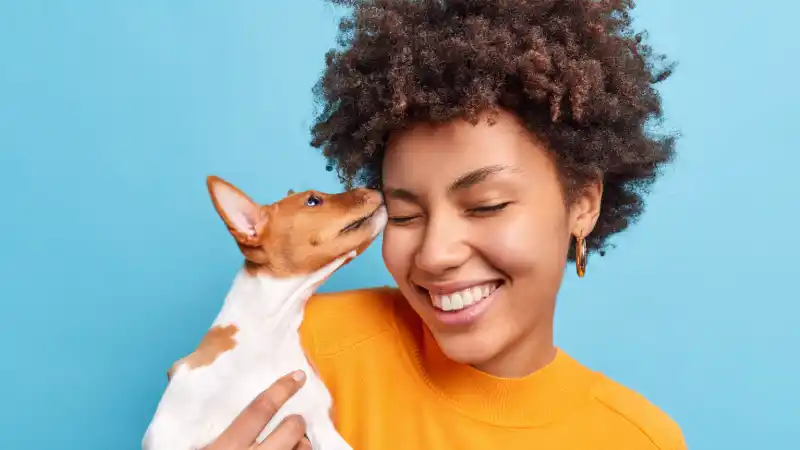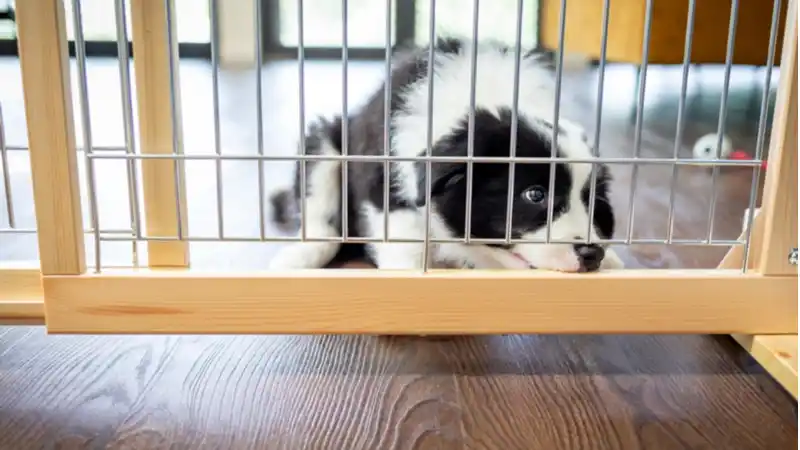The 7 Steps to Bringing Home a New Dog for Your Kids
Bringing home a new dog to your kids? Here are 7 steps to prepare your pup, children, and home for a new pet, including ways to train your animal and family.

“Mommy, can we get a dog?”
Once you’ve said, “Yes,” the fun really begins!
What kind of dog should you get? Do you need a dog bed, doggy gate, toys, and other supplies? Then, there’s the whole etiquette of introducing your new dog to the kids and your home.
Preparation, both for your home and with your family, is as important as choosing the right dog.
Your New Dog’s First Day in the Family
Congratulations on your new addition! First, it’s best to set the stage for everyone. Remind yourself and your kids that the pup needs time to settle in and get to know the new sights and smells. Every pup is different. Some might be a little confused and maybe even scared at first. That’s OK. This is a lot of change for one day.
That’s why you want to create a safe space for the new dog and teach your kids the proper way to behave with their new friend.
Hopefully, you can get your new dog early in the day and plan to stay home to acclimate together, so by the time everyone’s ready for bed, they’re tired out and prepared to sleep well.
Here are seven tips to aid the adjustment period:
How to Puppy Proof Your Home
Before your new pup arrives, you’ll want to assess your house through the eyes of a curious pooch. Can they get into cleaning products? The trash? The bathroom? Take a proactive approach. Put the cleaning products behind a locked door or on a high shelf. Get lidded trash cans and teach the family to shut the bathroom and bedroom doors behind them.
That way, you limit the opportunity for your new doggo to get into things they shouldn’t.
Give Your Dog Their Own Space
A designated area for your new dog teaches them to associate that area as “theirs,” which helps them feel comfortable and confident. You’re probably familiar with dog crates, but there are alternatives too, like adjustable fences.
Containing your new dog to a specific area where they can still be with the family (but are confined) means fewer accidents to clean up and less chance of chewed-up stuffed animals.
Create a Calm and Relaxed Environment for Your New Puppy
Children tend to get super excited. High-pitched squeals, loud stamping of feet, and clapping hands will probably cause your dog to reach in unpredictable ways. For example, the dog might think squealing and clapping are an invitation to jump in the air and maybe even jump on your child.
Teach your children to stay calm around the pooch. You may need to lay down ground rules for doggy interaction. For example, rules like not putting your hands in the dog’s face or pulling their tail (or ears) are good starters.
Encourage Kids to Sit Around the Dog
If they feel comfortable, your children can sit on the floor and get to know their new dog. Let your dog wander freely in the same room and approach the kids if they want. The kids can use tidbits of treats to set the tone for a friendly relationship.
If the dog is bigger, excited, or the children feel shy, keep the dog confined and let the children get used to the dog’s presence. They can still feed the dogs treats if they’re comfortable.
Teach Your Children About Dog Ownership Responsibilities
Now that you have your children’s attention, this is an excellent opportunity to teach them to care for others. Even young children can make sure the pup always has a full bowl of clean water. Older children can make sure the dog gets outside on a regular schedule. Everyone can pick up dog toys.
Take Dog Obedience Training Seriously
If you adopted an older dog, you might have lucked out when it comes to training. Older pups often come house-trained, kid-trained, and are happy to relax on their bed in the corner until it’s time to go for a well-trained walk on the leash.
But if you got a puppy or a younger dog, your entire family needs training on what to say and do when your new dog misbehaves. For example, “Sit” stated in a calm, measured tone, accompanied with a hand up in the “Stop” position, is a great way to command your dog to sit.
The trick is to get everyone in the family to do it the same way each time. That way, it’s easy for your dog to understand.
Settle In Before Welcoming Guests
Let your dog have the time to settle in before you invite people over to meet the new pooch or schedule play dates with other dogs. Your new dog deserves a few weeks to get comfortable with their new life. Always supervise your dog and kids until you feel comfortable with their behavior.
As you know, a well-trained dog is a wonderful companion. It can be a little chaotic at first, but worth it when you see your kid whispering secrets in the dog’s ear. Start the introduction off on a positive note and you’ll create lifelong memories together.
Take some of the stress out of pet ownership with Accident & Illness Coverage from AKC Pet Insurance (underwritten by Independence American Insurance Company). Our pet insurance plans are designed to be there when you need them, allowing you to focus more on the health of your pet and less on costly veterinary bills.

Every Dog and Cat Deserves the Pet Insurance of Champions
Get prize-winning care for your pets.
A connoisseur of fluffy pups, Jen Phillips April started writing about dog health back in 2005 with a dog treat recipe site. Now she writes for multiple pet brands, veterinarians, and pet tech.
READ MORE ARTICLES

